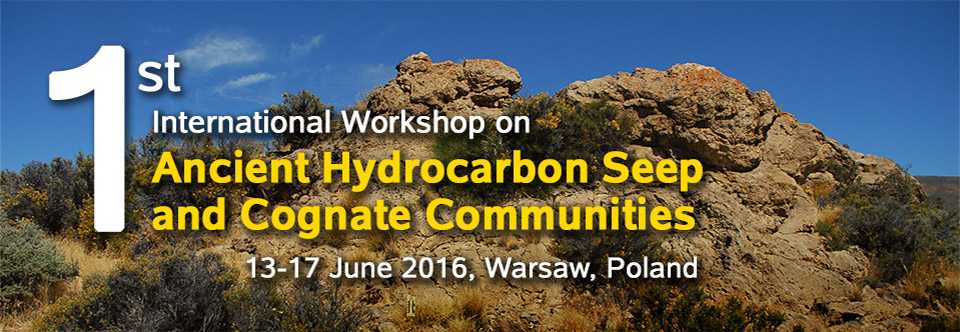
BOREAL MESOZOIC SEEP COMMUNITIES
Crispin T.S. LITTLE
School of Earth and Environment, University of Leeds, Woodhouse Lane, Leeds LS2 9JT, UK.
Corresponding author: C.T.S.Little@earth.leeds.ac.uk
Four areas of Upper Jurassic to Upper Cretaceous aged methane seepage are known from present-
day high latitude sites in the Arctic region. These are: (1) East Greenland at Kuhnpasset,
Wollaston Foreland (Barremian) and Leitch Bjerg, Geographical Society Island (Campanian),
(2) Spitsbergen (Tithonian–Berriasian), (3) Novaya Zemlya (three ages: Oxfordian–Kimmeridgian
and Tithonian, and latest Berriasian–Valanginian), and (4) Canadian Arctic on Prince Patrick and
Ellef Ringnes Islands (both Albian). In the Mesozoic the latter three areas were part of the Boreal
Ocean, which, like the present-day Arctic Ocean, was a relatively isolated marine basin with limited
marine connections with the Tethys and ancient Pacific (Panthalassic) Oceans at various times. The
East Greenland seeps occurred in a more southerly position in the narrow Norwegian-Greenland
Seaway that linked the Boreal Ocean to the Tethys, through NW Europe. Only the Spitsbergen
and Early Cretaceous Greenland seep communities have been studied taxonomically and these
show an intriguing mixture of species, including a large percentage of background taxa and few
seep obligates (Spitsbergen), and a large percentage of seep obligates and few background species
(Greenland). Some fossils common in the Panthalassic and Tethyan Mesozoic seep sites are completely
absent from the Spitsbergen and Greenland seeps, for example dimerelloid brachiopods
and the gastropod genus Paskentana. Based on preliminary data this is also true for the Novaya
Zemlya and Canadian Arctic seeps (on-going work with colleagues from Poland, Norway, Sweden
and Canada) . This suggests that in the Mesozoic there was a seep fauna in the Arctic area distinct
from that of contemporary lower latitude seeps. Potential explanations for this may be related to
the palaeobiogeographic isolation of the Arctic area seeps in the Mesozoic (as seen periodically in
non-seep molluscan faunas, particularly ammonites), and/or contemporary palaeoenvironmental
differences, such as palaeolatitudinal seawater temperatures, or water depth (palaeobathymetry).
